Avant-Garde Art \ Surrealism Reviewed [LTMCD 2343]
Surrealism Reviewed is an audio anthology of historic spoken word recordings by Surrealist artists, writers and poets.
Made between 1929 and 1963, the collection includes poetry readings, interviews, lectures and manifestos. Most are in the English language, though some are in French (marked FR below). Leading lights include Marcel Duchamp, Salvador Dali and André Breton. The remarkable contributions from Robert Desnos and Herbert Read were feared lost for several decades, unheard since they were cut onto acetate discs in the 1930s.
Running for 74 minutes, with detailed sleevenotes, Surrealism Reviewed is a must for all students of 20th century art, literature and the avant-garde, as well as left-field creative ideas and endeavour. The cover art reproduces This Morning (1951) by Yves Tanguy. ISBN 0-9540549-5-4
Tracklist:
1. Tangos Argentinos Un Chien Andalou (1928)
2. Herbert Read The Surrealist Object (1937)
3. Marcel Duchamp The Creative Act (1957)
4. Jean Cocteau La toison d'or (1929)
5. Max Ernst interview (1960s)
6. Tristan Tzara Dada Into Surrealism (1959) (FR)
7. Philippe Soupault interview (1959) (FR)
8. Salvador Dali interview (1963)
9. Man Ray Interview
10. Lee Miller interview (1946)
11. Roland Penrose interview (1946)
12. Robert Desnos Relation d'un rêve (1938) (FR)
13. André Breton Interview (1950) (FR)
14. Louis Aragon interview (1963) (FR)
15. André Breton L'union libre
Available on CD and digital (MP3 or FLAC). To order CD please first select correct shipping option (UK, Europe or Rest of World) and then click on Add To Cart button below cover image. Digital copies are delivered to customers by link sent via email.
Reviews:
"With extensive sleeve notes and translations, this is a brilliant little primer for would-be avant-gardists" (Glasgow Herald, 10/2002)
"A formidable if unlikely branch of rock's ancestry. Many of the recordings here feature music, most strikingly Robert Desnos, whose eerie accompaniment represents a very early example of ambient/avant-garde electronica" (Uncut, 12/2002)
"A remarkable audio gallery to be heartily applauded, with superb sleeve notes and English translations. Fascinating" (Record Collector, 12/2002)
![Surrealism Reviewed [LTMCD 2343]](../images/ltmcd2343.jpg)
Surrealism Reviewed liner notes
The Surrealist movement is usually dated from 1924. In October of that year André Breton published the first Surrealist Manifesto, followed two months later by the first issue of the new group's review La Révolution Surréaliste. In truth, however, its origins go back to 1918, the year in which Breton first met Louis Aragon and Philippe Soupault. By March 1919 this trio had launched the ironic review Littérature, which would eventually absorb the remaining energies of Dada and lay the foundations of Surrealism.

1. TANGO ARGENTINOS Un Chien Andalou (0.30)
This short extract from an unknown 'Tango Argentinos' is featured in the 'sonorised' version of Un Chien Andalou, the first Surrealist film made by Louis Bunuel and Salvador Dali in 1928. When a musical soundtrack was added to the film in France in 1960, the two tangos used were said to been chosen by Bunuel himself, being those he had played on a gramophone when the film was originally screened in Paris. This is difficult to confirm, for extensive enquiries have failed to identify the pieces. Nevertheless, they are clearly in the spirit of Surrealist activity in the late 1920s.
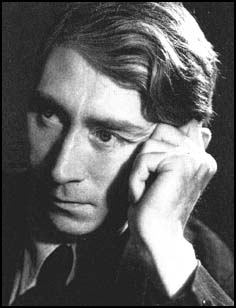
2. HERBERT READ The Surrealist Object (7.15)
Sir Herbert Read (1893-1968) became involved in Surrealism following the return of Roland Penrose from France in 1935. Already known as a poet and critic, Read was instrumental in the formation of the English group, and the organisation of the celebrated International Surrealist Exhibition at the New Burlington Galleries in June 1936.
This private recording, cut onto a metal-backed acetate disc, was made in 1937, and is similar in tone and content to his opening remarks at the exhibition Surrealist Objects and Poems at the London Gallery in November of that year, where his solemn appearance and moderated BBC tone gave him a gravity incongruous with the outlandishness of the artworks on display.
An anarchist at heart, Read numbered among the co-founders of the Institute of Contemporary Arts in 1947. This recording appears by kind permission of the Lee Miller Archive and the Roland Penrose Collection.

3. MARCEL DUCHAMP The Creative Act (7.22)
French artist Marcel Duchamp (1887-1968) achieved fame in New York as early as 1913, when his painting Nude Descending a Staircase No. 2 became the most notorious exhibit at the Armoury Show. His celebrated 'readymades' such as Fountain (1917) foreshadowed the anti-art character of Dada, and after the First World War ended Duchamp returned to Paris, where he collaborated with the Surrealists until 1925.
Duchamp ceased painting in 1925 in order to concentrate on mixed media assemblies, and from 1946 to 1966 was thought to be interested only in chess. Examples of his 'musical errata' can be heard on the CDs Futurism & Dada Reviewed (LTMCD 2301) and Musical Erratum/In Conversation (LTMCD 2505).
This recording captures a paper presented to the American Federation of Arts at Houston, Texas, in April 1957, and appears courtesy of Marc Dachy.

4. JEAN COCTEAU La Toison d'Or (2.52)
French poet, auteur and catalyst Jean Cocteau (1889-1963) became a creative figure of considerable influence worldwide. Mischievous, morbid, shocking and brilliant, Cocteau's poetic oeuvre even extended to this lively side recorded in March 1929, backed by the Dan Parrish Jazz Orchestra.
The music played behind La Toison d'Or (The Golden Fleece) is based on Holidays, written by pianist Parrish and banjo player Vance Lowry. Despite being a leading figure in the avant-garde, and briefly associated with Tzara, Cocteau was disliked by core Surrealists such as Breton, Aragon and Eluard. Nevertheless, this novel recording is included here as an evocative snapshot of the jazz age.

5. MAX ERNST Interview (0.48)
Initially a student of philosophy, the German painter Max Ernst (1891-1976) founded the Cologne Dada group in 1919, and was championed by the proto-Surrealists after his one-man exhibition at the Sans Pareil Gallery in Paris in May 1921.
After prolonged visa problems caused by his reputation as a dangerous Dada activist, Ernst arrived in Paris the following year to take part in the advent of Surrealism. His invention of the 'collage' and 'frottage' processes mirrored experiments by Breton, Eluard and Soupault with automatic writing, and like them he sought to eliminate the conscious creative role of the artist.
Ernst spent the war years in the USA, later settling in France, and is today recognised as one of the leading lights in international Surrealism. Here he is found in conversation with Roland Penrose in the 1960s. This recording appears courtesy of the Roland Penrose Estate.

6. TRISTAN TZARA Dada Into Surrealism (3.39)
Born Samuel Rosenstock in Moinesti, Romania, Tristan Tzara (1896-1963) moved to Zurich in 1916 where he co-founded the original Dada group and the Cabaret Voltaire. As well as a poet, Tzara was the chief propagandist of Dada, and in 1920 moved to Paris to continue artistic provocation in company with the Litterature group centred around Andre Breton, Louis Aragon and Philippe Soupault.
Never easy bedfellows, Tzara railed against Breton's attempt to make a rigid discipline of the essential anarchy of Dada, and left the group after hand-to-hand fighting broke out at the premiere of his play The Gas Heart in July 1923.
Like many intellectual radicals of the day, Breton and Aragon included, Tzara was later drawn to Marxism, which saw a partial rapprochement with his former Surrealist colleagues. A connoisseur of African art, Tzara died of cancer at home in Paris in December 1963.
For the interview segment 'Dada Into Surrealism', Tzara was interviewed by Olivier Todd in 1959. This recording appears by kind permission of Christophe Tzara. The background music is an interpretation of a musical erratum by Marcel Duchamp, The Bride Stripped Bare by her Bachelors, Even.

7. PHILIPPE SOUPAULT Interview (4.09)
Philippe Soupault (1897-1990) was born in Chaville, France, and was introduced to Andre Breton by the poet Guillaume Apollinaire. Soupault participated in the early Dada manifestations in Paris, forming part of the original Litterature group, and in 1920 co-wrote the first Surrealist text with Breton, The Magnetic Fields, the first fruit of their experiments with automatic writing.
Taking little influence from Tzara and Dada, The Magnetic Fields owed more to Lautreamont's Les Chants de Maldoror (punned in the title) and Rimbaud's Illuminations.
In practising automatism, the pair hoped to identify the psychic sources of the muse and imaginative inspiration. Unhappily, in 1929 Soupault found himself excluded from the Surrealist movement, and died in Paris in 1990. This interview was recorded by Olivier Todd in 1959.

8. SALVADOR DALI Interview (7.44)
Chiefly a painter, Salvador Dali (1904-1989) was born in Figueiras (Spain) and joined the Surrealist ranks in 1929 following Cubist and Futurist phases, and collaboration with Bunuel. His paintings are characterised by the application of a rigorously detailed and realistic technique to fantastic subjects, surroundings and contexts, and from 1929 Dali developed his own 'paranoiac-critical' method, in which the mind was encouraged to look at one thing - yet see another.
In 1934 Breton expelled Dali from the Surrealist clique following a bizarre 'trial', and in later years his reputation was tarnished by ceaseless and extravagant self-promotion.
Salvador Dali remains the only Surrealist to have appeared on the Russell Harty Show. On this recording Dali is caught in conversation with David Bryson in 1963.

9. MAN RAY Interview (1.03)
Born Emmanuel Radnitsky in Philadelphia, the painter, photographer and inventor of 'objects' Man Ray (1890-1976) stands as the only true precursor of Dada and Surrealism in America. Associated with Duchamp and Francis Picabia in New York during the First World War, Man Ray relocated to Paris in July 1921 and joined forces with the proto-Surrealist Litterature group, where his 'Rayograms' and solarisations were enthusiastically received.
Often Man Ray bypassed the camera in favour of forms produced directly on photographic paper. His archives provide an incomparable record of the literature, art and personalities of the period.

10a. LEE MILLER Interview (11.52)
An icon today, Lee Miller (1907-1977) was variously a model, photographer, war correspondent and writer. Born in Poughkeepsie, New York, Lee Miller began visiting Paris after 1925. In 1929 she became both model and muse to Man Ray, assisting in the development of the 'solarisation' technique, and the following year appeared in Cocteau's film Blood of a Poet.
Miller returned to New York in 1932 to embark on her career as a photographer, before eventually settling in London with the leading British Surrealist Roland Penrose.
In 1944-45 she worked in Europe as a war correspondent for Vogue, assignments discussed in detail in this interview for the wonderfully contrived Ona Munson radio show (Columbia Broadcasting), recorded in Los Angeles in the summer of 1946. This recording appears by kind permission of the Lee Miller Archive and the Roland Penrose Collection.
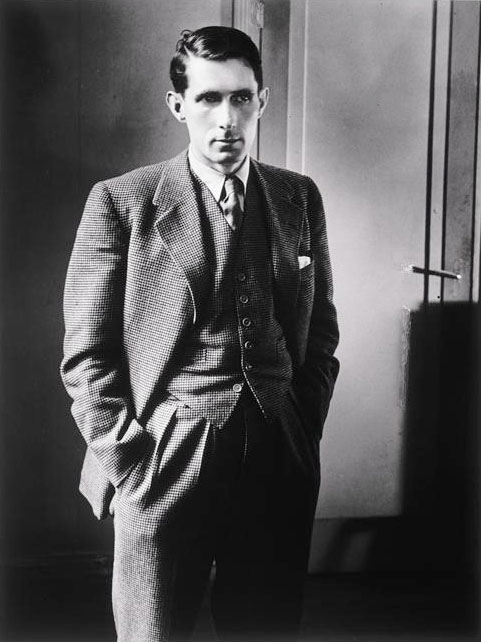
10b. ROLAND PENROSE Interview
The fantastical Ona Munson interview concludes with Roland Penrose (1900-1984). Born in London, in 1922 Penrose travelled to Paris to study painting and there became a close friend of Picasso, Eluard and Ernst.
Together with the poet David Gascoyne, Penrose introduced Surrealism into Britain on his return in 1935, and with Gascoyne, Read and others, Penrose organised the International Surrealist Exhibition in June 1936, at which works by every major Surrealist were exhibited, as well as 'outsider art' by the mentally ill. The opening was attended by more than a thousand people, including Breton, Eluard, Mesens and Dali - the latter famously becoming trapped inside the cumbersome diving suit in which he gave his lecture.
The following day the Daily Mail poured scorn on the 'fashionably dressed and slightly exotic young men of the 'Mayfair Modernist' school.' Penrose met Lee Miller in 1937, who he married a decade later, in the same year that he co-founded the ICA. A noted collector, author and chronicler of the Surrealist movement, his own paintings and collages remain underrated.
This recording appears by kind permission of the Lee Miller Archive and the Roland Penrose Collection.
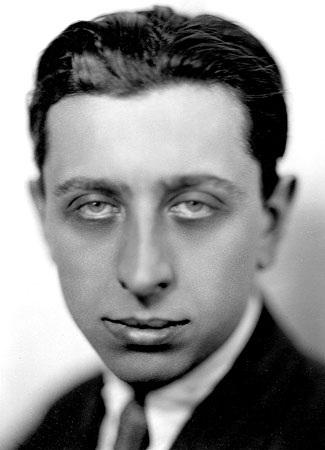
11. ROBERT DESNOS Relation d'un rêve (3.17)
Born in Paris, Robert Desnos (1900-1945) stood at the vanguard of Surrealism, and was one of the first poets to explore techniques of automatic writing. His early poems appeared in Littérature, where his work singled out for particular praise by Breton both in the Surrealist Manifesto, and in Nadja. Little interested in Marxism, Desnos leaned instead towards the poetry of desire, and between 1920 and 1930 published eight verse collections, as well as a novel, Liberty or Love.
Desnos would later be castigated by Breton for his journalism and orthodox 'talent' in the second Manifeste, and in 1930 the poet found himself expelled from the Surrealist group. During the next decade Desnos undertook increasingly commercial assignments, radio work included, and in 1933 his poem La grande complainte de Fantômas was set to music by Kurt Weill and broadcast in France. Unfortunately no recording survives.
Relation d'un Rêve (Description of a Dream) was recorded in 1938 for Radio Luxembourg, and was perhaps a prototype for La Clef des Songes. During the war years Desnos worked as an editor for the clandestine Les Editions du Minuit, but was arrested and deported to Buchenwald. In June 1945 he succumbed to typhus at Terezene (Theresienstadt) in Czechoslovakia, mere days after the camp was liberated by the Allies. This recording appears courtesy of Jacques Frankael and INA, France.
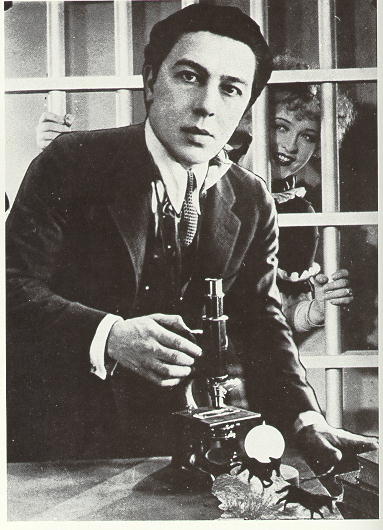
12. ANDRE BRETON Interview (10.18)
The principal theorist of Surrealism, Andre Breton (1896-1966) was born in Tinchebray (Orne), and drew early poetic influence from Guillaume Apollinaire and Paul Valery. After medical service in the First World War, Breton aligned himself with the Dada movement and played an important part in its publications and manifestations in Paris. In 1919 he founded the review Litterature with Aragon and Soupault, and the following year co-wrote The Magnetic Fields. However in 1921 the proto-Surrealists split from Tzara and Paris Dada.
His first Surrealist Manifesto of 1924 defined Surrealism as 'pure psychic automatism, by which an attempt is made to express, either verbally, in writing or in any other manner, the true function of thought. The dictation of thought, in the absence of all control by the reason, excluding any aesthetic or moral preoccupation.' Although the Surrealist movement remained forever in a state of change and conflict, Breton remained an important contributor to its major periodicals The Surrealist Revolution (1924-29) and Surrealism In Service of the Revolution (1930-33).
Mad Love (1937) remains his best known poetic collection, and Nadja (1928) his best novel. A lifelong Marxist after 1927, Breton died in Paris in September 1966. These extracts are drawn from interviews conducted in 1950 by Andre Parinaud, and appear courtesy of Aube Breton-Elleouet.
13. ANDRE BRETON L'Union Libre (3.15)
L'union libre (Free Union) is among Breton's most celebrated poems, and was originally published in the 1931 collection Clair de Terre. The recording date is unknown. This recording appears courtesy of Aube Breton-Elleouet.

14. LOUIS ARAGON Interview (5.55)
Poet, writer and controversial essayist, Aragon (1897-1982) was born Louis Andrieux in Paris. Only briefly a participant in Paris Dada, he founded the pre-Surrealist journal Litterature with Breton and Soupault, then The Surrealist Revolution and the more politicised Surrealism In Service of the Revolution.
Later he ran the art journal Minotaur (1932) and, in New York in 1944, founded the art journal VVV with Duchamp and Ernst. In translation, his best known prose works remain The Libertine (1924) and Paris Peasant (1926).
Marriage to Elsa Triolet (1928) and a visit to Stalin's Russia (1930) lead Aragon to communism and a split with his fellow Surrealists, and after 1932 his work became almost exclusively political in tone. This extract from an interview with Francis Cremieux was recorded in 1963.
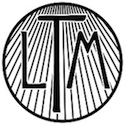

![SURREALISM REVIEWED [LTMCD 2343]](../images/SURREV.jpg)
![VEXATIONS [LTMCD 2389]](../images/ltmcd2389.jpg)
![FESTIVAL DADA PARIS 1920-23 [LTMCD 2513]](../images/ltmcd2513.jpg)
![COCTEAU, SATIE & LES SIX [LTMCD 2402]](../images/ltmcd2402.jpg)
![LE GROUPE DES SIX: SELECTED WORKS 1915-1945 (2CD) [LTMCD 2533]](../images/ltmcd2533.jpg)
![A YOUNG PERSON'S GUIDE TO THE AVANT-GARDE [LTMCD 2569]](../images/ltmcd2569.jpg)